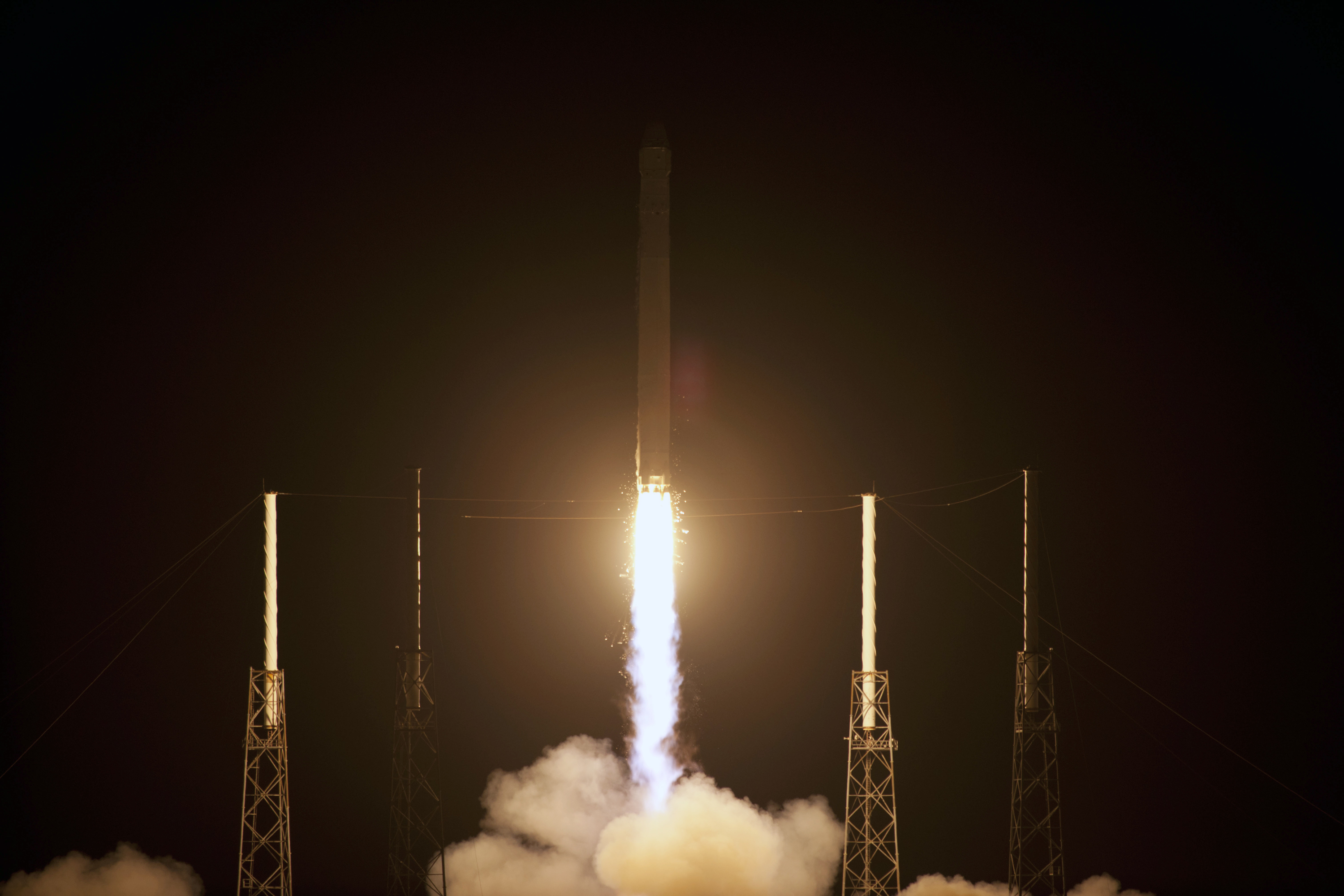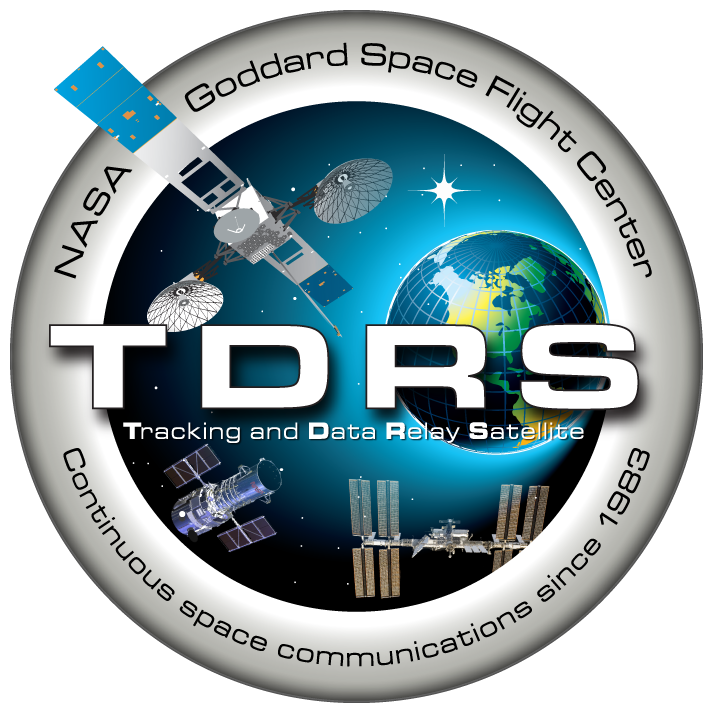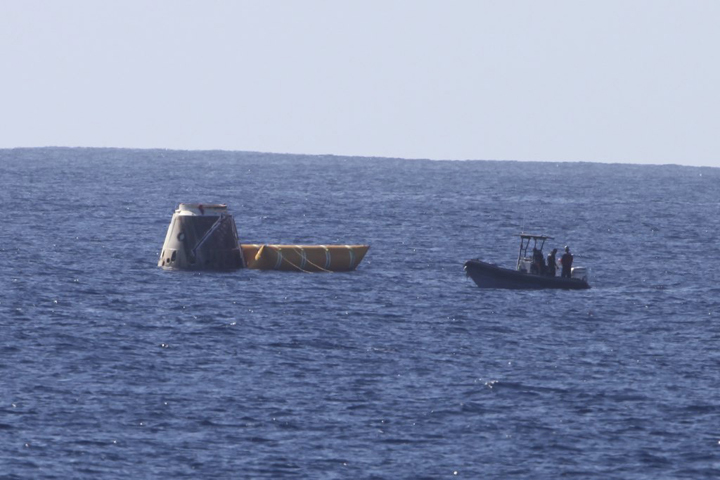|
Commercial Resupply Services
Commercial Resupply Services (CRS) are a series of flights awarded by NASA for the delivery of cargo and supplies to the International Space Station (ISS) on commercially operated spacecraft. The first phase of CRS contracts (CRS-1) were signed in 2008 and awarded $1.6 billion to SpaceX for twelve SpaceX Dragon 1, Dragon 1 and $1.9 billion to Orbital Sciences for eight Cygnus (spacecraft), Cygnus flights, covering deliveries to 2016. The first operational resupply missions were flown by SpaceX in 2012 (SpaceX CRS-1, CRS SpX-1) and Orbital in 2014 (Cygnus CRS Orb-1, CRS Orb-1). In 2015, NASA extended CRS-1 to twenty flights for SpaceX and twelve flights for Orbital ATK. A second phase of contracts (CRS-2) was solicited in 2014. CRS-2 contracts were awarded in January 2016 to Orbital ATK's continued use of Cygnus (spacecraft), Cygnus, Sierra Nevada Corporation's new Dream Chaser, and SpaceX's new SpaceX Dragon 2, Dragon 2, for cargo transport flights beginning in 2019 and expec ... [...More Info...] [...Related Items...] OR: [Wikipedia] [Google] [Baidu] |
Aerospace
Aerospace is a term used to collectively refer to the atmosphere and outer space. Aerospace activity is very diverse, with a multitude of commercial, industrial, and military applications. Aerospace engineering consists of aeronautics and astronautics. Aerospace organizations research, design, manufacture, operate, maintain, and repair both aircraft and spacecraft. The border between space and the atmosphere has been proposed as above the ground according to the physical explanation that the air density is too low for a lifting body to generate meaningful lift force without exceeding orbital velocity. This border has been called the Kármán line. Overview In most industrial countries, the aerospace industry is a co-operation of the public and private sectors. For example, several states have a civilian space program funded by the government, such as NASA, National Aeronautics and Space Administration in the United States, European Space Agency in Europe, the Canadian Space A ... [...More Info...] [...Related Items...] OR: [Wikipedia] [Google] [Baidu] |
Commercial Space Launch Act Of 1984
Commercial Space Launch Act of 1984 is a United States federal law authored to facilitate the private enterprise of the commercialization of space and space technology. The Act of Congress set forth the quest to acquire innovative equipment and services offered by entrepreneurial ventures from the information technology services, remote sensing technology, and telecommunications industries. The Act recognized the United States private sector as having the capability to develop commercial launch vehicles, orbital satellites, and operate private launch sites and services. The Act also assigned the duties of overseeing and coordinating commercial launches, issuing of licenses and permits, and promotion of safety standards to the Secretary of Department of Transportation. The H.R. 3942 legislation was enacted by the 98th Congressional session and signed by President Ronald Reagan on October 30, 1984. History In the 1970s, the National Aeronautics and Space Administration began t ... [...More Info...] [...Related Items...] OR: [Wikipedia] [Google] [Baidu] |
Cygnus Orb-D1
Orbital-D1, also known as Orb-D1, and Cygnus 1, was the first flight of the Cygnus cargo spacecraft developed by Orbital Sciences Corporation. It was named after the late NASA astronaut and Orbital Sciences executive G. David Low. The flight was carried out by Orbital Sciences under contract to NASA as Cygnus' demonstration mission in the Commercial Orbital Transportation Services (COTS) program. The mission launched on 18 September 2013 at 14:58:02 UTC. Cygnus was the seventh type of spacecraft to visit the International Space Station (ISS), after the crewed Soyuz and Space Shuttle, and uncrewed Progress, ATV, HTV and Dragon 1. Spacecraft The Cygnus Orb-D1 mission was the first flight of the Cygnus spacecraft and used the standard configuration with a Pressurized Cargo Module (PCM), built by Thales Alenia Space, in Italy. Orbital named this mission's Cygnus spacecraft the '' G. David Low'' after the former NASA astronaut and Orbital employee who died of cancer on 15 Ma ... [...More Info...] [...Related Items...] OR: [Wikipedia] [Google] [Baidu] |
Mid-Atlantic Regional Spaceport
The Mid-Atlantic Regional Spaceport (MARS) is a commercial space launch facility located at the southern tip of NASA's Wallops Flight Facility on Wallops Island in Virginia, just east of the Delmarva Peninsula and south of Chincoteague, Virginia, United States. It is owned and operated by the Virginia Spaceport Authority. Background The Virginia General Assembly created the political subdivision Virginia Commercial Space Flight Authority (VCSFA), also known as Virginia Space, in 1995 to promote the development of the commercial space flight industry, economic development, aerospace research, and Science, Technology, Engineering, and Math (STEM) education throughout the Commonwealth. This initiative was done from the recommendations of the Batten College at Old Dominion University, with Dr. Billie Reed, a longtime professor at the University, installed as its Executive Director. In 1997, Virginia Space entered into a Reimbursable Space Act Agreement with NASA, which ... [...More Info...] [...Related Items...] OR: [Wikipedia] [Google] [Baidu] |
Antares (rocket)
Antares (), known during early development as Taurus II, is an American expendable medium-lift launch vehicle developed and built by Orbital Sciences Corporation (later Orbital ATK and Northrop Grumman) with financial support from NASA under the Commercial Orbital Transportation Services (COTS) program awarded in February 2008, alongside the company's automated cargo spacecraft, Cygnus. Like other launch vehicles developed by Orbital, Antares leveraged lower-cost, off-the-shelf parts and designs. The first stage is liquid fueled, burning RP-1 (kerosene) and liquid oxygen (LOX). Due to Orbital's limited experience with large liquid stages, the construction was subcontracted to the Ukrainian companies Pivdenne and Pivdenmash. Initially, the Antares 100 series used refurbished NK-33 engines, remnants of the Soviet N1 moon rocket. However, after a catastrophic explosion, the Antares 200 series transitioned to newly built Russian RD-191 engines. Following Russia's in ... [...More Info...] [...Related Items...] OR: [Wikipedia] [Google] [Baidu] |
COTS Demo Flight 2
SpaceX COTS Demo Flight 2 (COTS 2), also known as Dragon C2+, was the second test-flight for SpaceX's uncrewed Cargo Dragon spacecraft. It launched in May 2012 on the third flight of the company's two-stage Falcon 9 launch vehicle. The flight was performed under a funded agreement from NASA as the second Dragon demonstration mission in the Commercial Orbital Transportation Services (COTS) program. The purpose of the COTS program is to develop and demonstrate commercial sources for cargo re-supply of the International Space Station (ISS). The Dragon C2+ spacecraft was the first American vehicle to visit the ISS since the end of the Space Shuttle program. It was also the first commercial spacecraft to rendezvous and berth with another spacecraft. Initially, the objectives of the C2+ mission were to have been accomplished by two separate missions; Dragon C2 would have carried out a fly-by of the ISS, practiced rendezvous maneuvers and communications with the station, before return ... [...More Info...] [...Related Items...] OR: [Wikipedia] [Google] [Baidu] |
Tracking And Data Relay Satellite System
The U.S. Tracking and Data Relay Satellite System (TDRSS, pronounced "T-driss") is a network of American communications satellites (each called a tracking and data relay satellite, TDRS) and ground stations used by NASA for space communications. The system was designed to replace an existing network of ground stations that had supported all of NASA's crewed flight missions. The prime design goal was to increase the time spacecraft were in communication with the ground and improve the amount of data that could be transferred. Many Tracking and Data Relay Satellites were launched in the 1980s and 1990s with the Space Shuttle and made use of the Inertial Upper Stage, a two-stage solid rocket booster developed for the shuttle. Other TDRS were launched by Atlas IIa and Atlas V rockets. The most recent generation of satellites provides ground reception rates of 6 Mbit/s in the S-band and 800 Mbit/s in the Ku band, Ku- and Ka band, Ka-bands. This is mainly used by the United S ... [...More Info...] [...Related Items...] OR: [Wikipedia] [Google] [Baidu] |
COTS Demo Flight 1
SpaceX COTS Demo Flight 1 was the first orbital spaceflight of the Dragon cargo spacecraft, and the second overall flight of the Falcon 9 rocket manufactured by SpaceX. It was also the first demonstration flight for NASA's Commercial Orbital Transportation Services (COTS) program. The primary mission objectives were to test the orbital maneuvering and reentry of the Dragon capsule. The mission also aimed to test fixes to the Falcon 9 rocket, particularly the unplanned roll of the first stage that occurred during flight 1. Liftoff occurred on 8 December 2010 at 15:43 UTC. The success of the mission allowed SpaceX to advance its vehicle testing plan. With two back-to-back "near-perfect" Falcon 9 launches and satisfactory tests of the first Dragon capsule, SpaceX "asked NASA to combine objectives laid out for the remaining two COTS missions... and permit a berthing at the ISS during its next flight". This combined test mission was completed in May 2012, and achieved its obje ... [...More Info...] [...Related Items...] OR: [Wikipedia] [Google] [Baidu] |
Space Act Agreements
Space Act Agreements (abbreviated SAA) are a type of legal agreement specified in the National Aeronautics and Space Act of 1958 (and subsequent congressional authorizations) that uniquely empowers the National Aeronautics and Space Administration (NASA) to work with any entity that enables fulfillment of the Administration's mandate. As recently as the 2010 authorization of (): :Contracts, Leases, and Agreements.--In the performance of its functions, the Administration is authorized, without regard tsubsections (a) and (b) of section 3324 of title 31 to enter into and perform such contracts, leases, cooperative agreements, or ''other transactions'' as may be necessary in the conduct of its work and on such terms as it may deem appropriate, with any agency or instrumentality of the United States, or with any State, territory, or possession, or with any political subdivision thereof, or with any person, firm, association, corporation, or educational institution. The Agency enters i ... [...More Info...] [...Related Items...] OR: [Wikipedia] [Google] [Baidu] |
Government Accountability Office
The United States Government Accountability Office (GAO) is an independent, nonpartisan government agency within the legislative branch that provides auditing, evaluative, and investigative services for the United States Congress. It is the supreme audit institution of the federal government of the United States. It identifies its core "mission values" as: accountability, integrity, and reliability. It is also known as the "congressional watchdog". The agency is headed by the Comptroller General of the United States. The comptroller general is appointed by the president with the advice and consent of the Senate. When a vacancy occurs in the office of the comptroller general, Congress establishes a commission to recommend individuals to the president. The commission consists of the following: *the speaker of the United States House of Representatives *the president pro tempore of the United States Senate *the majority and minority leaders of the House of Representatives and t ... [...More Info...] [...Related Items...] OR: [Wikipedia] [Google] [Baidu] |
PlanetSpace
PlanetSpace was a privately funded Chicago-based rocket and Spaceflight, space travel project founded by Geoff Sheerin, CEO of the Canadian Arrow corporation. The owner was Dr. Chirinjeev Kathuria. In February, 2007, NASA announced plans to provide PlanetSpace with requirements and specifications to provide crew and cargo flights to the International Space Station under the terms of the National Aeronautics and Space Act. Initially, PlanetSpace planned to use the Silver Dart for this purpose, but on 21 November 2007 PlanetSpace announced its Commercial Orbital Transportation Services, COTS proposal would use a spacecraft provided by Lockheed Martin. This proposal did not include use of the Silver Dart. Planetspace is not in business as its corporate status was revoked by Canadian government due to non-compliance with filing requirements. Its last annual meeting was held in 2010 and no filings since then. Background The mission of PlanetSpace was to make space travel accessibl ... [...More Info...] [...Related Items...] OR: [Wikipedia] [Google] [Baidu] |








